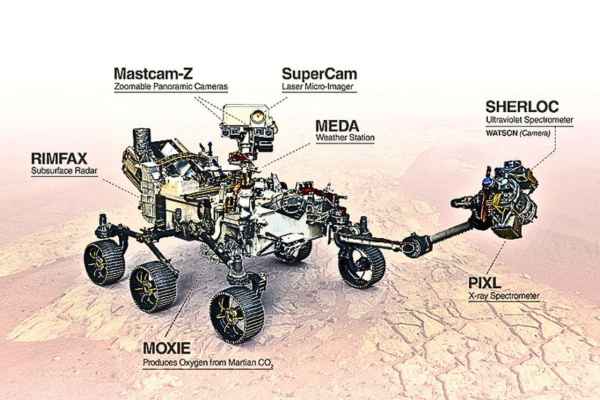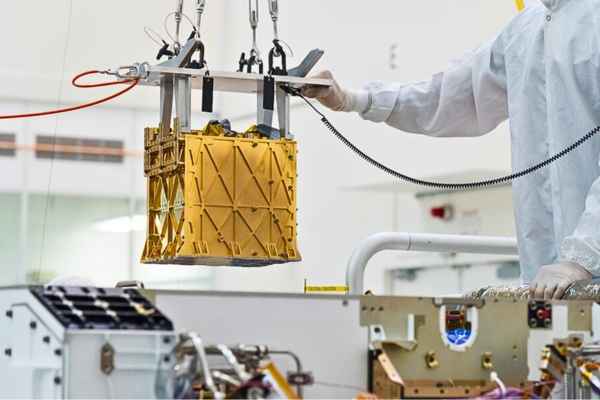The dream of human colonization of Mars has fascinated scientists, filmmakers, and dreamers alike for decades. What once seemed like science fiction is inching closer to reality, thanks to the groundbreaking work of companies like Utah’s OxEon Energy. OxEon is collaborating with NASA’s Jet Propulsion Laboratory to create MOXIE, the Mars Oxygen In-Situ Resource Utilization Experiment.
MOXIE is a critical technology designed to produce oxygen on Mars, a milestone that could change the future of space exploration and colonization. Here, we explore the implications of MOXIE’s success, its role in human missions to Mars, and the broader impact on space travel and sustainability.
The Oxygen Production Revolution: MOXIE Triumphs
MOXIE has successfully concluded its 16th trial on NASA’s Perseverance rover. This experiment marks a historic achievement, as it demonstrates the ability to create oxygen on Mars using the planet’s primarily carbon dioxide atmosphere. Throughout its trials, MOXIE generated a total of 122 grams of oxygen, a substantial amount capable of sustaining a person’s breathing for six hours.

Dr. Michael Hecht, MOXIE’s lead investigator, emphasizes that while the current MOXIE is a scaled-down version, a larger iteration is necessary for generating enough oxygen to support astronauts on future missions. This scaled-up technology could revolutionize space travel by reducing the reliance on oxygen supplies transported from Earth.
Reducing Dependence on Earth’s Resources Moxie
One of the most significant advantages of this critical Technology is its potential to drastically reduce the amount of supplies required for missions to Mars. The full-scale MOXIE, in its envisioned role, would produce liquid oxygen, which serves as a propellant for spacecraft returning to Earth. This innovation could significantly decrease the need to transport large quantities of fuel from Earth to Mars, making space missions more cost-effective and sustainable.
Implications for Mars Missions and Space Exploration Moxie
Beyond its role in oxygen production, this critical technolgy holds profound implications for the future of Mars missions and space exploration in general. By reducing the mass and cost of Mars missions, this critical Technology could free up resources for vital research and exploration activities. It could also enable longer missions and more profound explorations into space, expanding the frontiers of human knowledge.
Addressing Climate Change and Air Quality
Dr. Hecht highlights the possible need for an additional unit to convert and store the produced oxygen properly. This unit would ensure the efficient conversion of carbon dioxide into useful oxygen and maintain adequate storage levels for future use. Furthermore, integrating such a unit could address growing concerns about climate change and its impact on air quality.
Collaboration for Mars Exploration Readiness
Dr. Hecht emphasizes the importance of ensuring NASA and private firms like SpaceX are adequately prepared for Mars missions. This readiness involves the development of essential technologies, infrastructure, and safety measures. Collaboration between government agencies and private entities can enhance mission efficiency and pave the way for sustainable Mars exploration.
The Future of Space Exploration
While MOXIE’s journey to reality took a decade, the knowledge gained is invaluable for future human-led missions to Mars. Continuous research and development in space exploration will build on MOXIE’s success, refining and advancing technologies that could make long-term Mars missions more feasible. This progress could ultimately lead to sustainable colonization efforts and a broader understanding of life beyond Earth.
Conclusion
MOXIE’s accomplishments signify a remarkable step forward in the quest for human colonization of Mars and the sustainability of space exploration. As humanity pushes the boundaries of space travel, MOXIE’s success opens doors to a future where we can harness local resources, reduce our reliance on Earth’s supplies, and explore the cosmos more efficiently. The dream of Mars colonization is no longer just science fiction; it’s becoming an exciting reality.




